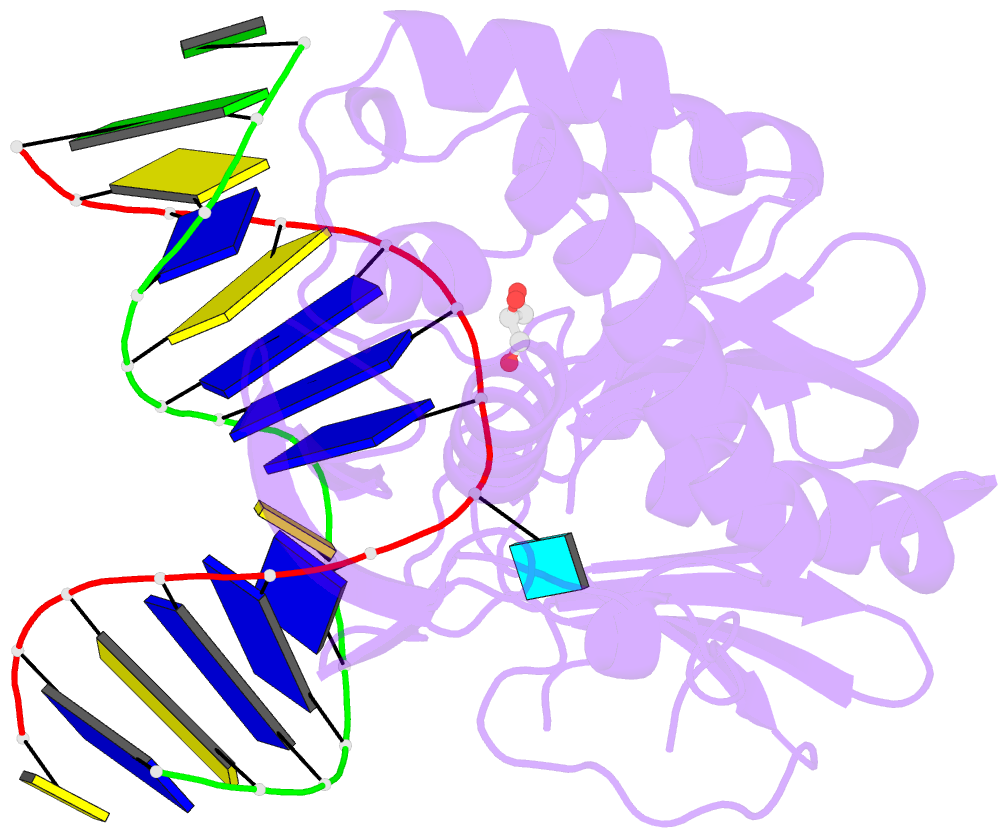Summary information and primary citation
- PDB-id
- 3c58; SNAP-derived features in text and JSON formats;
DNAproDB
- Class
- hydrolase-DNA
- Method
- X-ray (1.9 Å)
- Summary
- Crystal structure of a complex between the wild-type lactococcus lactis fpg (mutm) and a n7-benzyl-fapy-dg containing DNA
- Reference
- Coste F, Ober M, Le Bihan YV, Izquierdo MA, Hervouet N, Mueller H, Carell T, Castaing B (2008): "Bacterial base excision repair enzyme Fpg recognizes bulky N7-substituted-FapydG lesion via unproductive binding mode." Chem.Biol., 15, 706-717. doi: 10.1016/j.chembiol.2008.05.014.
- Abstract
- Fpg is a bacterial base excision repair enzyme that removes oxidized purines from DNA. This work shows that Fpg and its eukaryote homolog Ogg1 recognize with high affinity FapydG and bulky N7-benzyl-FapydG (Bz-FapydG). The comparative crystal structure analysis of stable complexes between Fpg and carbocyclic cFapydG or Bz-cFapydG nucleoside-containing DNA provides the molecular basis of the ability of Fpg to bind both lesions with the same affinity and to differently process them. To accommodate the steric hindrance of the benzyl group, Fpg selects the adequate rotamer of the extrahelical Bz-cFapydG formamido group, forcing the bulky group to go outside the binding pocket. Contrary to the binding mode of cFapydG, the particular recognition of Bz-cFapydG leads the BER enzymes to unproductive complexes which would hide the lesion and slow down its repair by the NER machinery.





